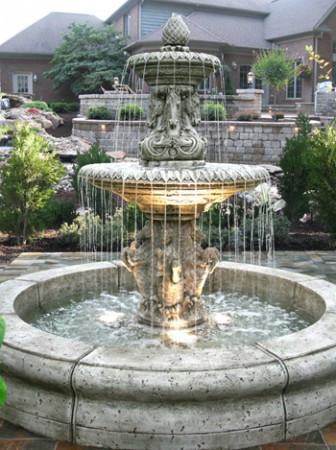Trafalgar Square Fountain
Trafalgar Square was once famous for its huge population of feral pigeons. At one point there were estimated to be 35,000 living in the area that loved to be fed seed by tourists. The droppings became so out-of-control that they start disfiguring stone works. In an effort to preserve the area, and its famous fountain, a law was passed making it illegal to feed them. Fortunately, the bird droppings didn't do noteworthy damage to the Trafalgar Square Fountain. It has been carefully preserved and has received upgrades to improve its beauty, so it continues to be one of the most prominent structures in the city of London, England.
History
The Trafalgar Square was originally developed to commemorate the Battle of Trafalgar. The square boasts statues at all four corners and four bronze lions crafted from recycled cannons are at the square's center.
After suggestions offered from a local paving board in 1841, it was decided that fountains should be installed to counteract glare from the asphalt surface and effects of reflected heat. The suggestion was welcomed primarily because it was believed the presence of the fountain would help reduce any risk of riotous assembly.
Two fountains were erected. One sat in front of the National Gallery with the other behind it. A tunnel connected the two and a steam engine pumped the water.
In 1930, Sir Edwin Lutyens designed two new centerpieces that were crafted as memorials to Lord Beatty and Lord Jellicoe. The original centerpiece from 1845 was removed by the Canadian government and placed in Ottawa and Regina.
Admiring the Fountain
The fountain of Trafalgar Square does not have an official name. When one mentions the square to those who has been there the fountain automatically comes to mind. After all, it is positioned in the heart of the square. It features a simple tiered fountain in the center, which sits in a very large square pool. As mentioned, the lions were made from recycled cannon, which actually happen to be directly from the French Fleet.
When the original centerpieces were removed, the bronze sculptures that replaced them consist of dolphins swimming alongside mermaids.
In 2009, the fountain went through another restoration project. The pump system got replaced with a modern one that can now shoot a jet of water 80 feet into the air. In preparation for the 2012 Summer Olympics, an LED lighting system was installed. Not only does it make the fountain a popular attraction at night; the fountains carbon footprint has been reduced by about 90 percent.
